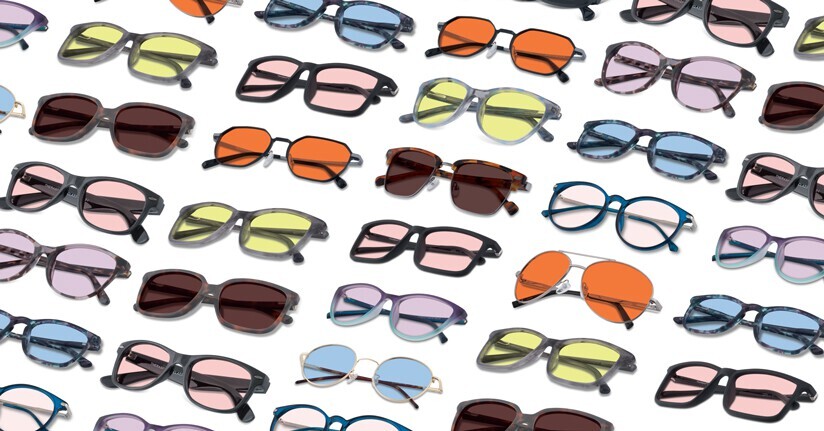Migraine Tips: Get More Natural Light While Working at Home
Remote work can feel like an empowering professional option for somebody with migraine, in large part because of the relative control he or she can exercise on the environment. This can lead to better management of migraine-specific triggers, including the type and amount of light available in the home office space. Instead of painful fluorescent or artificial lighting, you can enable natural light sources, and we share ways to bring more of it into your home without activating your symptoms.
Benefits of natural lighting
Who doesn’t love getting the brilliance of the outdoors in their workspace? Aside from the connection to the outside world, there are numerous benefits to having natural light exposure while you work. In fact, it has been cited as the #1 employee perk over other common benefits like onsite food service or exercise spaces.
In addition, workers have described the lack of outdoor light in their work environment as a core reason for deteriorating mood as well as fatigue and the need for increased eye breaks (due to heavy device screen exposure). Not only has proper natural lighting been shown to reduce eyestrain, headaches and other symptoms, but there is evidence that it increases productivity and creativity—particularly when coupled with proximity to other natural elements like greenery.
Risks of improper natural lighting
The introduction of natural light into your work-from-home lifestyle cannot be binary; for people with migraine and other light-sensitive conditions, caution must be taken so as to optimize the benefits without creating new complications. Specifically, too much brightness (no matter the source) can lead to an increase in migraine frequency or photophobia symptoms for any of the 90% of people with migraine who also have light sensitivity. Obviously, if you are symptomatic as a result of the lighting in your space, then productivity will likely suffer as well and—if it happens enough—may even jeopardize your job due to the overwhelming public stigma associated with migraine.
Tips to Get More Natural Light Indoors
We offer a few ways to bring more natural light indoors safely if you have migraine or another primary headache disorder.
- Avoid natural light directly behind your screen: Glare from your computer screen can increase eye strain, squinting and photophobia. Having a bright light source positioned directly behind you will amplify glare.
- Limit exposure to street-adjacent windows: If you have migraine, the abrupt reflection of sunlight off a passing car can cause searing pain. If possible, position yourself away from spaces that increase this risk.
- If you have window blinds, open them all the way versus partially: Contrasting light patterns can trigger attacks and even seizures for some people. Generally, fully open shutters or blinds are more comfortable even though it creates more brightness.
- Use alternative window treatments: Uncovered windows might offer too much light while shutters or window blinds may add unpleasant contrasts. If you can, perhaps try sheer coverings—or even a sheet—to blunt some of the direct light without causing unpleasant patterns.
- Balance natural lighting as much as possible: Having a singular, concentrated area of natural light might create migraine discomfort due to the imbalance of light. Cross lighting, either from adjacent windows or warm lamp lighting, can balance out the space and make it easier on the eyes.
- Create multiple lighting setups: As you know, light changes throughout the day as the sun adjusts its position. This can turn once-comfortable environments unpleasant depending on the time of day. Trialing alternative sources of natural light or establishing secondary working areas in your home can keep you prepared for these situations.
Other recommendations
Although you might have more flexibility in your home lighting situation than your professional office, it is not likely to be perfect, and you may have to make some compromises. This makes it important to practice good eye and brain health in other ways to compensate for less-than-ideal natural lighting. This includes:
-Taking regular eye breaks from screens to avoid eye fatigue
-Wearing TheraSpecs indoor migraine glasses if certain light sources are too bright
-Avoiding wearing dark sunglasses indoors to prevent dark adaptation
-Utilizing other screen-related features to limit artificial blue light exposure
Hopefully these tips can give you a pleasant work-from-home experience without giving you any additional migraine pain.
Additional reading:
8 Things to Avoid if you Have Light Sensitivity
Tinted Glasses for Indoor Use: 7 Things to Know
Computer Screens: The Effect on Headaches, Migraines and Concussions

TheraSpecs® Glasses for Light Sensitivity
Find the glasses that fit your needs and lifestyle, and stay protected from screens, fluorescents, unwanted blue light, sunlight, flashing lights, and more.
Shop Now



